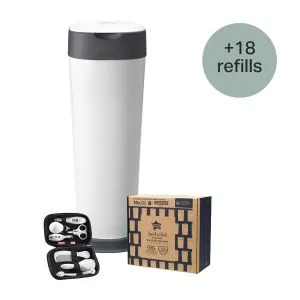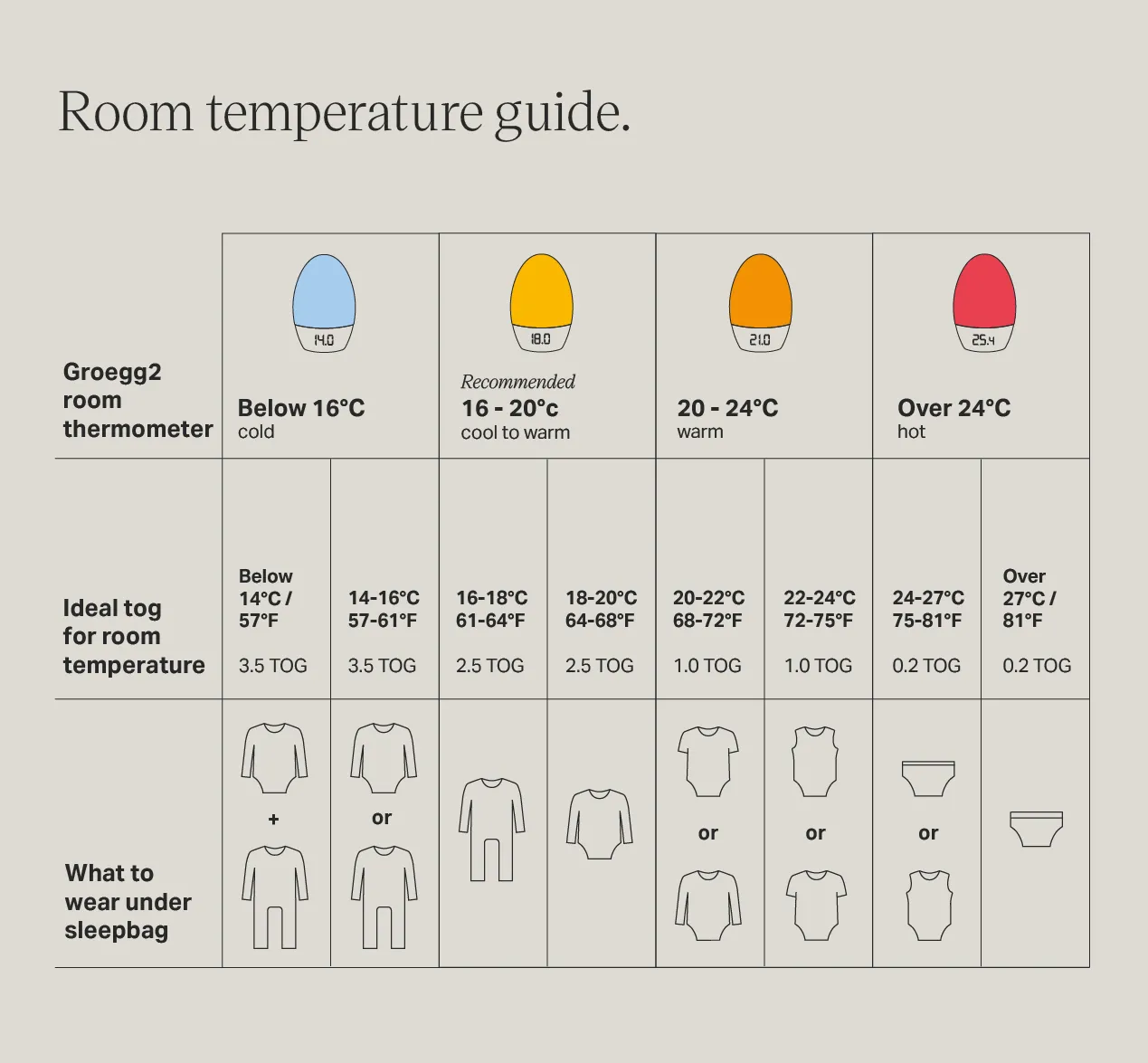
Ultimate XL Nappy Disposal Bundle with 18 Refills
Bundle & Save 40%
Subscription orders can be cancelled at anytime. Free delivery on all subsequent subscription orders. Find out more about subscriptions.
They’re easy and fuss free
Your products are automatically sent to you
You save up to 10% when you sign up for a subscription
You can cancel at any time

Every parent deserves a good night's sleep, but it’s not always easy, and navigating the early months with a newborn can feel overwhelming. If you’re a new (sleep-deprived) parent, don’t forget that you're doing an amazing job, and you’re not alone!
We know that sleepless nights are tough, so we’ve included our top five baby sleep must-haves in this guide, so you can get into a sleep routine that works for both you and your baby.
Your baby should sleep in the same room as you for the first six months of their life in a cot or Moses basket with a firm, clean, flat mattress that conforms to British safety standards (BSEN716) and carries the BSI number BS 1877-10:2011+A1:2012.
The safest position for a baby to sleep in is on their back with their feet at the foot of their cot or Moses basket. Once they can roll over themselves, they can choose their own sleep position. Keep your baby’s sleep space clear of any loose items. Babies don’t need pillows, quilts, or any loose bedding.
Want to learn more about safe sleep? We always advise parents to consider these expert guidelines from The Lullaby Trust.
Wondering what to dress baby in for sleep? We’ve got you. Dressing your baby in the right clothing for bed helps to keep them safe and comfortable, and baby sleep bags are an option that many parents choose.
These all-in-one styles come in a range of togs (or thicknesses) for different room temperatures and act as a wearable blanket, meaning there’s no need for extra bedding or covers. Instead of layering your baby up with loose blankets, you can dress them in lightweight layers, underneath their sleepbag.
If you choose to use a baby sleeping bag, make sure it’s designed for your baby’s age and that their head can’t pass through the neck hole when it's fastened. If it can, the sleep bag is too big for them, and you should try a smaller size.
Here’s a guide to which tog rating a baby should wear, and what they should be dressed in underneath it, according to the temperature of the room they’re sleeping in.

A room temperature of 16-20°C is comfortable and safe for a sleeping baby, and you can use a room thermometer (like our GroEgg2) to help you monitor the temperature of your baby’s surroundings while they sleep.
Babies are less able to control their body temperature and shouldn't sleep close to a radiator or in a sunny position. The best way to check your baby's body temperature while they sleep is to put your hand on their chest or the back of their neck. For extra reassurance, you can use an electric baby thermometer.
Nightlights designed for babies can help create a soothing bedtime routine. Their dim glow can gently ease the transition from day to night, help to make falling (and staying) asleep easier for your baby, and can also help make nighttime breast and bottle feeds easier, with no need to turn on the big light!
Look for nightlights with adjustable brightness and soothing colours like warm white or red.
The Tommee Tippee Dreammaker™ has been created in collaboration with a leading sleep laboratory to simulate ideal sleep conditions and not stimulate baby. It has an ambient red light that promotes deep sleep by encouraging the onset of the sleep hormone melatonin and plays soothing pink noise that prolongs restful sleep by replicating the familiar sounds of the womb.
Peace of mind is priceless when it comes to your baby's sleep. A reliable baby monitor is an absolute must-have.
Using a baby monitor, like our Dreamsense and Dreamview models, will help you keep an eye and ear on your baby while they sleep, without having to be constantly watching over them.
Whether you opt for an audio-only monitor for simple listening, or a video monitor with a camera for visual reassurance, having the ability to keep tabs on your baby while they sleep will significantly reduce anxiety and allow you to rest easier. Look for features like night vision, temperature and humidity sensors, and two-way talk capabilities for added convenience.
Explore the Range
There are many reasons why your baby might not be sleeping well. Here are a few of the most common:
If you’re worried about your baby's sleep, it’s always a good idea to ask for support from friends and family and don't hesitate to talk to your doctor or health visitor. They can help you rule out any medical conditions and give you advice on how to improve your baby's sleep. In the meantime, here are a few tips that may help:
If you are having trouble getting your baby to sleep, try to be patient and stay calm. It may take some time to find what works best for you and your baby.